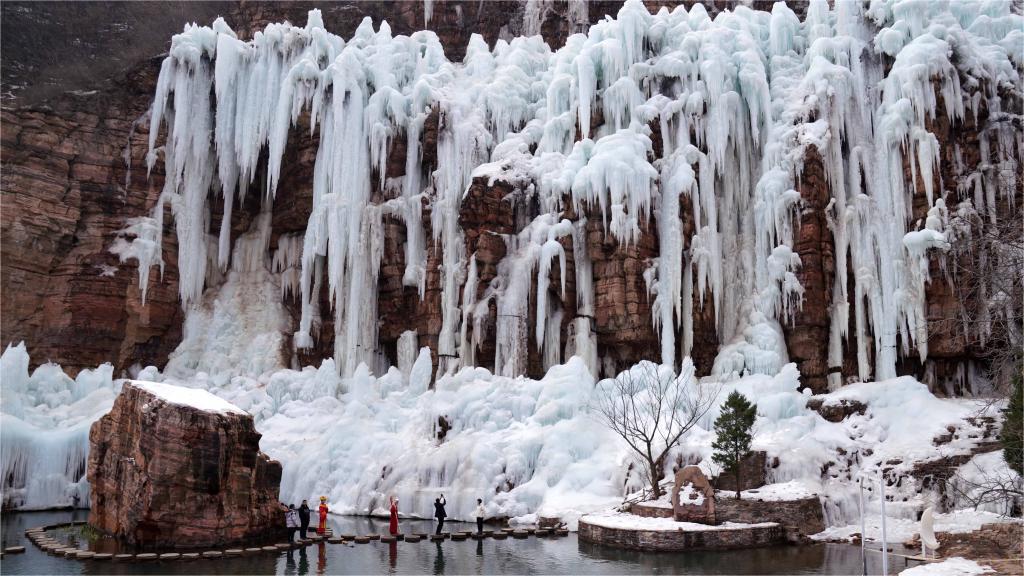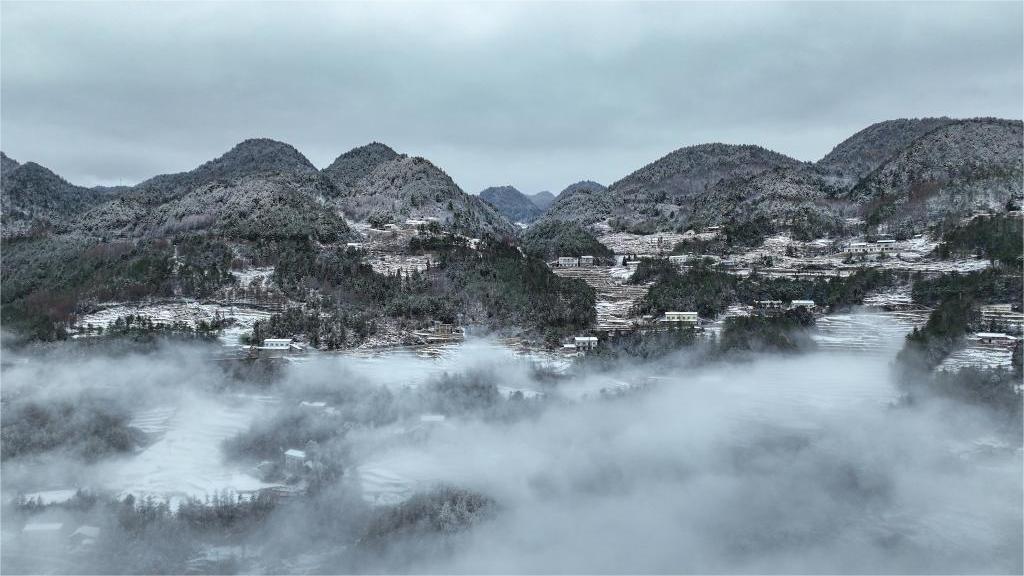Winter sports in China eye white-hot growth
An imaginative integration of fields like sports, health, business, tourism and culture is stoking the rapid growth of winter sports in China, building on the initial momentum imparted by the 2022 Beijing Winter Olympics. This is leading to expansion of facilities like ski resorts, snow slopes, ice rinks, snowboarding parks and indoor venues, with supporting attractions like cable cars at such places further boosting not only the sector's pull, but revenues.
According to the General Administration of Sport of China, the total number of visitors to 19 national ski resorts in November and December alone reached 9.43 million, up a staggering 316 percent year-on-year, with revenue from related sports and other activities reaching 6.46 billion yuan ($898 million), up 543 percent year-on-year.
Hu Wei, CEO of Nanshan Ski Resort, an established skiing venue in Beijing, said: "This snow season has seen a 5 to 10 percent increase in both visitors and revenue compared to the previous year. To accommodate the growing influx of visitors, we've expanded our fleet with eight new snow machines."
Since the 2022 Winter Olympics, there has been a noticeable surge in new participants joining winter sports, he said. "This was fueled by the enduring excitement over snow, a precious resource in a country where many people reside in the southern part that does not receive much snowfall."
To ride the rising popularity of snow sports and grow its business, Nanshan Ski Resort has partnered with international coaches from Canada and Japan to promote freestyle snowboarding through training programs and competitions.
Hu said: "Beijing's climate is ideal for freestyle snowboarding. It rarely experiences heavy snowfall that would obscure the slopes, making it ideal for training and competitions."
Emily Li, 32, a Shanghai-based corporate strategist, would probably agree. Li said she spends nearly 60,000 yuan or more every year to experience the thrills and excitement of snow and ice sports, especially snowboarding, her new passion. Some 20,000 yuan go toward domestic ski trips, including those to resorts in and around Beijing, while the rest is her budget for international excursions. But there is more in snow sports than just thrills, she said.
Li discovered her passion for skiing a decade ago, alongside diving, surfing and tennis. She views skiing not just as recreation, but as a personal challenge. "For me, skiing is more than just a winter pastime; it's a test of my limits and a confrontation with my fears."
Despite her apprehension about falls and risks of speed, skiing provides a unique blend of exhilaration and self-discovery, she said.
Li hits the slopes three times a year, favoring destinations like Beidahu and Songhuahu resorts in Jilin province, as well as ski resorts in Japan that are known for their pristine slopes and modern amenities.
Investing time and effort in skiing yields discernible rewards, both physically and socially, Li said. Skiing, she said, offers quick feedback and visible progress, while friendly competition and post-skiing camaraderie enhance the social aspect of the sport, akin to the bonding experienced during road trips and hiking adventures.
"The sense of camaraderie that comes with sharing meals and celebrations after a day on the slopes is truly fulfilling," Li remarked.
While ski boots are indispensable for Li, other elements of the gear are accessed through friends or online platforms that sell secondhand goods. Affordability is a priority for her, but so are quality and performance on which she would not compromise.
Li is among a rising number of skiers in China who spend big on ice and snow sports, and are even adopting new strategies to extract maximum mileage out of their new pastime. To beat growing crowds at venues of winter sports, some are choosing weekdays to visit, which also helps reduce costs and avoid peak traffic situations.
Wu Bin, founder and CEO of Beijing Snowpal Enterprise Management Co Ltd and author of the China Ski Industry White Book, said ski resort construction and expansion are presently experiencing robust momentum in China.
According to the 2022-23 edition of the book, 13 resorts — eight indoor venues and five outdoor facilities — were newly built and made operational during the previous fiscal year.
That took the total number of operational ski resorts in China to 697, including 166 that feature cable cars. During the period, domestic ski resorts recorded 19.83 million skier visits, which, while impressive, was actually down 8 percent from 2021-22, suggesting immense room for growth in the future.
The number of individuals engaging in skiing activities also experienced a 7 percent decline, with the per capita skiing frequency dropping from 1.79 to 1.77.
Hebei province near Beijing emerged as the leading province for skiers, while indoor ski resorts gained prominence as key players in the market, according to the China Ski Industry White Book.
China's dominance in the indoor ski industry is evident, with half of the world's top 10 indoor ski resorts located in the country, ranked by snow area, said Wu.
Additionally, the top three indoor ski resorts, ranked by snow area, are all in China. Indoor ski resorts accounted for 7.17 percent of all operational ski resorts, contributing significantly to the total skier visits.
According to Chengdu Sunac Snow Park, one of the leading indoor ski resorts in China, the domestic policy to boost tourism has triggered the surge in both travelers and revenue of the indoor venue of winter sports in Sichuan province in Southwest China, where snow is not frequent. Chengdu is now home to 14 ice rinks and six ski resorts.
"The number and scale of mostly small and medium-sized ski resorts in China are on the rise, but quality and matching facilities are still a work in progress," said Hu of Nanshan Ski Resort.
Photos
Related Stories
- Interview: Australia hopes China to be its top tourism market again, says tourism chief
- Visa-free travel to boost tourism for China, Thailand
- China adds 7 ski resorts to national roster
- Chinese tourists predicted to make over 6 bln domestic trips in 2024
- Festival spending a long-tail economic boost
- China's domestic tourism market surges during Spring Festival holiday
Copyright © 2024 People's Daily Online. All Rights Reserved.









